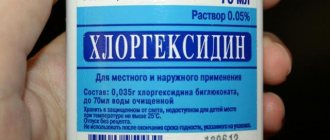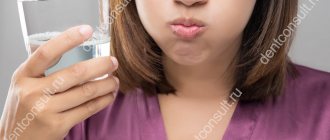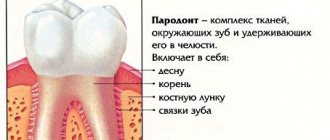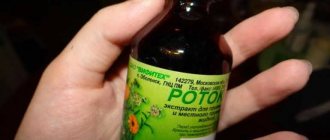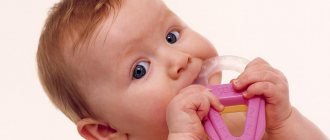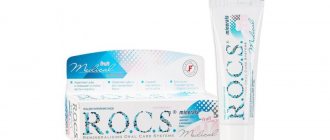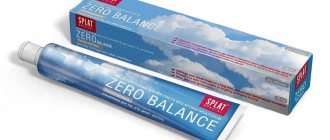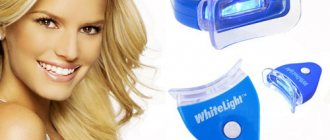Tooth extraction is a complex and traumatic dental operation, after which the patient must follow certain recommendations to prevent postoperative inflammatory processes and complications. It is very important to maintain oral hygiene to prevent the proliferation of bacterial flora and infection of the soft and hard tissues of the teeth. For this purpose, the patient is prescribed a combination of therapeutic and prophylactic therapy using antibacterial and antimicrobial drugs (for example, Metronidazole) and disinfectant solutions for local treatment.
Removal of a tooth
One of the safest, most effective and affordable disinfectants is Chlorhexidine. This is a combined agent that destroys representatives of fungal, microbial and bacterial flora, providing sanitation of teeth and mucous membranes after surgical procedures to extract a tooth from the bone alveolus. It can be used by patients of any age. If necessary, Chlorhexidine can be used to prevent complications after extraction in children and pregnant women.
Rinse after tooth extraction with Chlorhexidine
What is Chlorhexidine?
"Chlorhexidine" is a clear liquid with a characteristic odor of ethyl alcohol, which has antimicrobial and antibacterial effects. The drug is used for antiseptic treatment of the skin and mucous membranes after surgical operations, for accidental injuries and injuries accompanied by a violation of the integrity of the skin: scratches, cuts, abrasions. The product can be used to disinfect hands if it is not possible to provide standard hygienic treatment with water and soap.
The mechanism of action of the drug on the bacterial cell
The active ingredient of the antiseptic is chlorhexidine in the form of bigluconate. The drug is available in several dosage forms for local and external treatment:
- spray;
- solution;
- vaginal suppositories (suppositories).
In dentistry, Chlorhexidine is used in the form of a spray and solution. It is used to treat hands, medical instruments, and is also used to disinfect the oral cavity after dental treatment using surgical methods. The effect of the drug lasts up to four hours after use.
"Chlorhexidine"
The active substance is active against most pathogenic microorganisms, which include gram-negative and gram-positive bacteria, various groups of viruses, yeast-like fungi, and dermatophytes. Chlorhexidine is especially effective for the prevention of dental infections caused by chlamydia and trichomonas.
"Chlorhexidine" after tooth extraction
Properties of the solution
Chlorhexidine is a broad-spectrum antiseptic that is effective against most pathogenic oral bacteria.
This drug is widely used in dentistry, is sold in pharmacies, and its purchase does not require a prescription. A solution consisting of only two components - chlorhexidine digluconate and prepared water - is effective against most microorganisms. Viruses, fungi and bacteria that are not resistant to an acidic environment die after treatment with this drug. Only the herpes virus, microbial spores and some other bacteria that are not sensitive to acids are resistant to the product. Dentists use chlorhexidine solution after tooth extraction, as well as when removing dental plaque and tartar. The superiority of the drug is its exceptional effectiveness, maintained for 24 hours. At the same time, it is not affected by the presence of bleeding wounds, pus, saliva and the general high humidity of the oral cavity. Taking drugs belonging to the category of antibiotics is more effective when used simultaneously with chlorhexidine. It should be taken into account that ordinary toothpaste used daily can significantly reduce the antiseptic effect of the drug.
Why do you need Chlorhexidine: properties and action
After a tooth is removed, an open wound remains in the gum and fills with blood. A blood clot forms in the hole, protecting the open area of the periosteum from the penetration of pathogenic bacteria and microbes. If the clot does not adhere tightly to the socket or is accidentally damaged during eating, the risk of infection of the bone tissue and the development of osteomyelitis of the jaw increases - a purulent-inflammatory pathology, which, if not treated in a timely manner, can lead to the death of bone structures (osteonecrosis).
And this is how a blood clot may look in real life - it is very important not to wash it out when rinsing your mouth
To avoid damaging the clot, the following recommendations must be followed:
- in the first 1-2 days after removal, you should not drink through a straw, spit saliva, or perform other actions that create a vacuum in the mouth;
- You can chew on the side on which the removal took place 72 hours after surgery;
- You need to rinse your mouth carefully, trying not to make too active movements;
- Do not touch the clot with your tongue or try to remove it from the hole.
Another common complication after tooth extraction is alveolitis. This is a disease in which inflammation of the socket occurs. The pathology is accompanied by fever, severe pain, which can radiate to the ear, eye area, jaw and cervical and submandibular lymph nodes. The gums at the extraction site swell, and severe swelling and redness appear.
- How to rinse your mouth with Chlorhexidine for gum inflammation
Development of alveolitis in the socket after tooth extraction
The main cause of alveolitis is non-compliance with the hygiene regime and an increase in the number of pathogenic flora in the oral cavity. Pathogenic microorganisms entering the alveoli cause inflammation of soft tissues and the development of a pathological process. To prevent alveolitis and other possible complications, the patient is prescribed local treatment of the oral cavity with antiseptic solutions, one of which is Chlorhexidine. The use of this drug ensures disinfection of the mucous membranes and hard tissues of the tooth and prevents the development of infectious and inflammatory processes.
Tooth extraction is a full-fledged surgical operation.
Video - “Chlorhexidine”: application and effectiveness
Why rinse your mouth after removal?
However, rinsing also has its advantages: it allows you to clear the mouth of blood, as well as clean it after each meal. Preventing food debris from getting into the hole. Often, tooth extraction is carried out without preliminary sanitation of the mouth, which means that there may be carious teeth around the hole. In this case, there is a high risk of infection entering the hole that is open after removal. In such a situation, rinsing with an antiseptic can minimize this possibility.
How to rinse your mouth?
To rinse the mouth, only an aqueous solution is used - this point should be taken into account when purchasing the drug at the pharmacy. The concentration of the drug is 0.05%. Some, trying to achieve the maximum therapeutic effect, begin to rinse their mouth too often - up to 6-10 times a day. This approach is completely unjustified and can harm a person, since rinsing too often can cause irritation of the mucous membranes and dislodge the blood clot, which protects the exposed bone from the penetration of microbes.
"Chlorhexidine" in the form of a solution
To ensure therapeutic and prophylactic results, it is enough to perform the procedure 2 times a day after morning and evening brushing of teeth. If your gums are prone to bleeding, you can add one more rinse, but the total number of procedures per day should not exceed three.
Video: How to rinse your mouth with chlorhexidine
How to rinse your mouth correctly
Mouth rinsing with Chlorhexidine is carried out according to the following scheme:
- brush your teeth;
- after an hour, rinse your mouth and throat with boiled water at room temperature to remove dirt and food debris;
- take a small amount of the drug into your mouth and hold for 2-3 minutes;
- Carefully spit out the product, avoiding swallowing.
The duration of treatment is from 7 to 12 days.
You just need to keep the product in your mouth
Important! "Chlorhexidine" after tooth extraction can only be used for oral baths. The product must be kept in the mouth, it is allowed to tilt the head slightly to the sides, but you cannot move the cheeks and tongue, as this creates a vacuum in the mouth and can lead to the loss of a blood clot.
What antiseptic baths can be done after tooth extraction?
If the patient fully understands the difference between vigorous rinsing and gentle oral baths, he can speed up the healing process of the wound after extraction. This is especially true for complex cases where gum incisions and suturing took place. The most effective solutions for oral baths are those based on:
- Chlorhexidine (0.05-0.1% aqueous solutions) and preparations containing it.
- Furacilin (ready solution 0.02% or 10 tablets of 1% furatsilin dissolve in a liter of boiled water).
- Miramistin (as an alternative to baths, you can use a bottle with a spray, but you need to spray the wound from a distance of at least 5 cm from the hole so as not to dislodge the clot).
- Potassium permanganate (you need 1 gram of potassium permanganate powder and 1 liter of warm water to obtain a pale pink solution).
- Medicinal herbs (as prescribed by the dentist).
Objectively, only a dentist can prescribe the best way to rinse your mouth after tooth extraction. Make an appointment with a surgeon at MCDI ROOTT by calling 8 800 775–26–37 if you need to have a tooth removed. In our clinics on Dmitrovskaya and Proletarskaya, they will carry out high-quality extraction of any complexity, after which the patient will be prescribed procedures for speedy wound healing.
Precautions and tips for use
During the procedure, you should avoid getting the product into the digestive tract - this can lead to irritation of the mucous membranes of the stomach and intestines and cause inflammation of the surface layer of the gastrointestinal tract. Also, you should not use the drug for longer than the permissible period. Too long use of products based on chlorhexidine digluconate can lead to the destruction of beneficial oral flora and the development of dysbacteriosis.
Antiseptic "Chlorhexidine"
Dysbacteriosis of the oral cavity is accompanied by an unpleasant odor from the mouth, a dense coating on the inner surface of the cheeks and tongue, and other symptoms. Pathology is the main cause of stomatitis - inflammation of the mucous membranes of the oral cavity, most often of an infectious nature.
- Rinse after tooth extraction to heal gums
Before rinsing, it is important to maintain an hour's interval with hygiene measures, since the active ingredient "Chlorhexidine" is incompatible with some types of chemicals that may be included in toothpastes, powders and rinses. These include:
- colloids;
- alkaline compounds;
- carboxymethylcellulose;
- soap;
- gum arabic, etc.
"Chlorhexidine" is one of the most effective and popular antiseptics
Note! After rinsing your mouth with Chlorhexidine, you should not eat or drink for 1-1.5 hours. Eating foods earlier will reduce the effectiveness of the procedure.
Visiting the dentist
Possible contraindications and side effects
"Chlorhexidine" has practically no contraindications, with the exception of various groups of dermatitis. The manufacturer warns about possible intolerance to the drug and allergic reactions to the components of the solution, but practice shows that allergies to the drug are very rare - less than 1% of patients.
Contraindications and side effects
Side effects during use are rare. Patients may experience increased dryness of the mucous membranes of the oral cavity, tingling, burning and itching. These phenomena are of moderate intensity and do not require discontinuation of the drug or cessation of treatment.
Important! Most patients tolerate Chlorhexidine well, but in very rare cases, adverse reactions may occur. Extremely rarely, intolerance can manifest itself as a pinpoint, pale pink rash on the surface of the tongue, gums and inner surface of the cheeks. If this symptom appears, you should consult a doctor.
"Chlorhexidine" is sold in all pharmacies
Can children rinse their mouths with Chlorhexidine?
Tooth extraction may also be required in childhood. Typically, this measure is required when baby teeth are loose, but in case of severe carious lesions, molars may also need to be removed. Preventive treatment with antiseptics in childhood is especially necessary. This is due to several factors:
- insufficient activity of the immune system to suppress the growth of pathogenic microorganisms;
- poor hand hygiene and non-compliance with sanitary standards;
- increased sensitivity of the gums and soft tissues surrounding the tooth to the effects of pathogenic bacteria and inflammatory processes.
Can children rinse their mouths with Chlorhexidine?
If necessary, Chlorhexidine can be used in childhood, but the rules of use will differ from the preventive treatment of adult patients. For children, it is recommended to dilute the drug with boiled water in a ratio of 2:1 (2 parts Chlorhexidine - 1 part water). You should rinse your mouth strictly under adult supervision and only if the child knows how to spit out the product and does not swallow it.
The number of procedures is also slightly reduced. The maximum permissible number of rinses in childhood is 2 times a day. The course of prevention depends on the age of the child. Approximate norms are presented in the table below, but they may vary depending on the condition of the oral cavity, the complexity of removal and other individual characteristics of the child.
Treatment of a child with the drug is allowed
Table. The duration of the course of use depends on the age of the child.
| Child's age | Course of use after tooth extraction |
| 2-5 years | 3 days |
| 5-8 years | 5 days |
| 8-14 years | 7 days |
Contraindications
Important! Chronic use of the drug may cause the appearance of a yellow-brown tint to tooth enamel. To avoid this, during the period of use of chlorhexidine, it is necessary to refrain from eating food containing intensely coloring pigments (red wine, bright soda, beets, coffee, tea, etc.).
In order to clean the plaque that has already formed, you will have to carry out a professional hygiene procedure. There are other features of the use of this antiseptic. Solutions based on it are not used for longer than two weeks to avoid the development of dysbacteriosis of the oral mucosa. At the same time, you cannot use iodine-containing products. Wait a while before rinsing with chlorhexidine after brushing your teeth with toothpaste. After consultation with your doctor, and provided there are no open wounds in the mouth, the drug can be used by pregnant and lactating women. Chlorhexidine is not contraindicated in childhood, however, it should be used under adult supervision to avoid ingestion of the solution.
Tea, wine, coffee, as well as cigarettes, chocolate, colored vegetables and fruits, sweets should be avoided during the period of preventive actions using chlorgrexidine, because combinations of such products and medications can cause darkening of tooth enamel.
What to do if the drug is accidentally swallowed?
During the procedure, it is necessary to avoid getting Chlorhexidine into the stomach, but if this happens, there is no need to panic. The need to take any measures depends on the amount of the drug that enters the stomach. If the volume does not exceed one sip, you can do nothing, but at the same time carefully monitor how you feel.
- What medicine is put into the hole after tooth extraction?
If pain or cramping occurs in the abdomen, it is necessary to rinse the stomach with warm soda or saline solution, and then take any sorbent drug, for example:
- "Neosmectin";
- "Smectu";
- "Filtrum-sti";
- Activated carbon;
- "Polysorb".
Activated carbon
The same steps must be performed if the amount of medicine swallowed is more than 10 ml. If you feel unwell, have intestinal or stomach cramps or signs of intoxication, you should consult a doctor.
"Chlorhexidine" is one of the most famous and affordable antiseptics used in dental practice. It allows for disinfection of the oral cavity after surgery and prevents pathogenic bacteria from entering the socket of the extracted tooth. If you use Chlorhexidine according to the regimen prescribed by your doctor, you can avoid serious complications, for example, purulent-infectious lesions of the periosteum or alveolitis. During use, it is important to follow the precautions described in the official instructions for the drug.
What needs to be done in parallel with rinsing -
But after tooth extraction, it is important to perform not only antiseptic rinses (baths) in the oral cavity, but also to follow other recommendations, which will fully allow you to avoid the development of inflammation in the socket of the extracted tooth. Also, in addition to following general recommendations, in some cases it may be necessary to take medications - analgesics, antihistamines, and antibiotics.
- Analgesics (NSAIDs group) – the optimal choice of painkillers in dentistry are drugs from the NSAIDs group (non-steroidal anti-inflammatory drugs). Drugs in this group not only relieve pain well, but also at the same time reduce inflammation in tissues. If the removal was difficult, it is best to start taking one of these drugs before the local anesthesia wears off. Drugs from the NSAID group include: ibuprofen, nurofen, ketorol, ketanov, ketoprofen and others (which one is better - read the link above).
- Antihistamines - this group of drugs has not only antiallergic, but also anti-edematous/anti-inflammatory effects, and also enhances the effect of analgesics. If the removal was very traumatic, then we recommend taking a drug such as Suprastin for the first 3 days (1 tablet 1 time per day before bedtime).
- Antibiotic therapy - antibiotics are prescribed by a doctor in two cases. Firstly, when a tooth was removed due to purulent inflammation (with or without a gum incision). This is very important because... infection can lead to suppuration of the blood clot, its necrotic disintegration and the development of alveolitis. Typically, dental surgeons prescribe the antibiotic Lincomycin (2 capsules 3 times a day, for 5-7 days). But for gastrointestinal diseases, it is better to use Flemoxin Solutab or Unidox Solutab.

